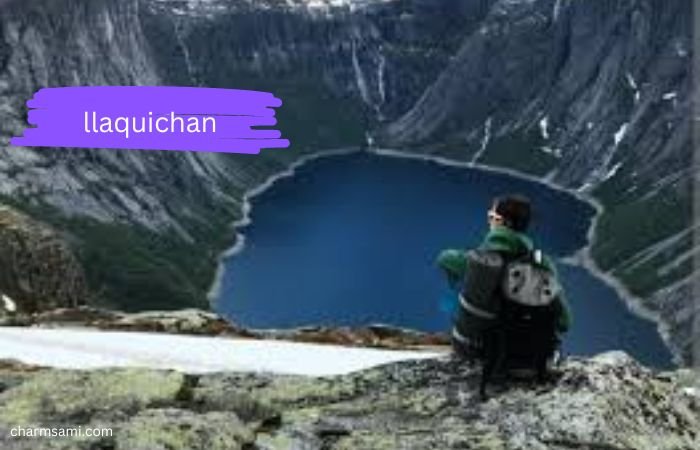
Llaquichan an evocative term that might sound unfamiliar to many, yet it holds centuries of cultural significance in ancient Peruvian history. Rooted deeply in the traditions of the indigenous peoples of Peru, Llaquichan is more than just a ritual; it is a testament to the rich tapestry of human heritage that has been woven over millennia. In a world where ancient traditions are rapidly being overshadowed by modernity, understanding and preserving Llaquichan is paramount.
The Origins of Llaquichan
The story of Llaquichan begins in the heart of ancient Peru. This ritualistic practice dates back to pre-Columbian times, flourishing in the diverse and complex societies that inhabited the region long before the arrival of European colonizers. The origins of Llaquichan are closely tied to the geographical and cultural landscapes of ancient Peru, particularly within the Andean highlands where many indigenous communities thrived.
Meaning and Significance
Llaquichan, a term derived from the Quechua language, is imbued with profound meaning. The word itself is believed to signify a deep connection to nature and the spiritual realm, reflecting the indigenous people’s reverence for their surroundings and the cosmos. This practice played a crucial role in their cultural and spiritual lives, serving as a conduit for expressing their beliefs, values, and communal identity.
Llaquichan in Incan Civilization
Within the expansive reach of the Incan Empire, Llaquichan found a prominent place. The Incas, known for their sophisticated societal structure and spiritual depth, integrated Llaquichan into their broader tapestry of religious and cultural practices. It became a key component of their societal rituals, underscoring the interconnectedness of their way of life.
Practices and Rituals
Traditional Llaquichan ceremonies are characterized by their intricate rituals, each imbued with symbolic meaning. These ceremonies often involve offerings to the gods, elaborate dances, and communal gatherings that reinforce social bonds. Rituals might include the use of sacred plants, music, and specific gestures that have been passed down through generations.
Symbols and Artifacts
The visual language of Llaquichan is rich with symbols and artifacts. Common symbols include representations of natural elements like the sun, moon, and mountains, all of which held significant spiritual value. Artifacts such as intricately crafted pottery, textiles, and ceremonial tools provide a tangible link to the past and offer insight into the ways these ancient people viewed their world.
Llaquichan in Modern Times
Today, Llaquichan continues to be practiced, albeit in adapted forms that reflect the changes and challenges of modern society. Various cultural organizations and communities in Peru are actively working to keep these traditions alive. Festivals and ceremonies incorporating Llaquichan are held to educate younger generations and to celebrate this enduring heritage.
Influence on Modern Peruvian Culture
The influence of Llaquichan extends beyond its traditional confines, permeating modern Peruvian culture. It can be seen in contemporary art, music, and festivals, where ancient symbols and themes are reimagined and celebrated. This ongoing cultural dialogue ensures that the essence of Llaquichan remains a living, evolving tradition.
Global Recognition and Interest
In recent years, there has been a growing global interest in indigenous traditions like Llaquichan. Efforts to promote and document these practices internationally have led to a broader recognition of their cultural and historical significance. Academic studies, documentaries, and cultural exchanges have played a vital role in bringing Llaquichan to the forefront of global cultural consciousness.
Challenges in Preservation
Despite its enduring legacy, Llaquichan faces numerous challenges. Urbanization, globalization, and cultural homogenization pose significant threats to its survival. However, dedicated efforts by cultural preservationists, scholars, and community leaders are working to mitigate these threats through education, advocacy, and revitalization projects.
The Future of Llaquichan
The future of Llaquichan lies in a delicate balance between preservation and adaptation. By fostering a deeper understanding and appreciation of this tradition, there is potential for a revival that respects its roots while embracing contemporary expressions. Education and awareness are key to ensuring that Llaquichan continues to be a vibrant part of Peru’s cultural landscape.
Personal Stories and Anecdotes
To truly grasp the essence of Llaquichan, one must listen to the voices of those who practice and cherish it. Stories from practitioners and historians reveal the profound impact of this tradition on their lives and communities. These personal accounts provide a richer, more nuanced understanding of Llaquichan’s significance.
How to Experience Llaquichan
For those intrigued by Llaquichan, experiencing it firsthand can be a transformative journey. Visiting cultural sites in Peru, participating in modern-day ceremonies, and engaging with local communities offer immersive ways to connect with this ancient tradition. These experiences not only provide insight but also contribute to the ongoing preservation efforts.
Conclusion
Llaquichan stands as a powerful reminder of the resilience and richness of human culture. By delving into its history, practices, and contemporary significance, we gain a deeper appreciation for the diverse tapestry of human heritage. Preserving Llaquichan is not just about safeguarding the past; it is about enriching our present and future with the wisdom and beauty of ancient traditions.
If you gained new insights from this article, explore our blog, Gimkit, for more enlightening content.